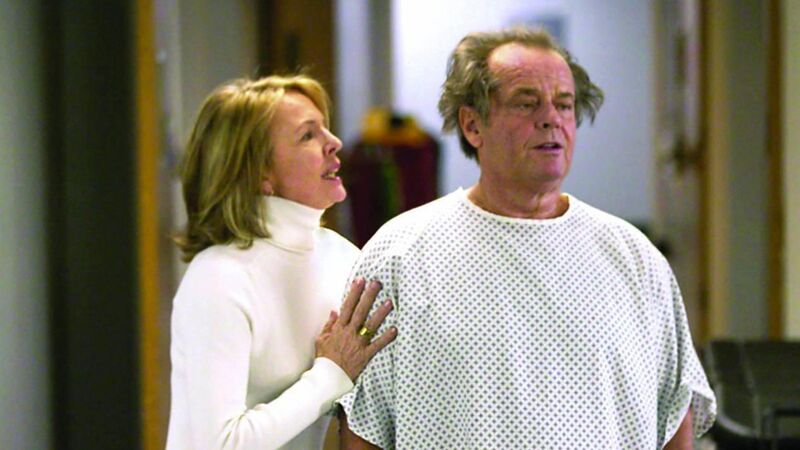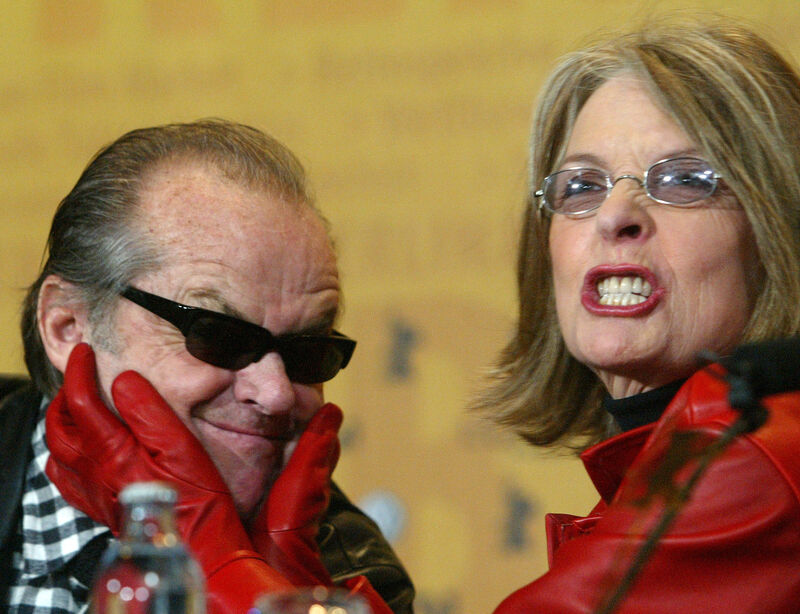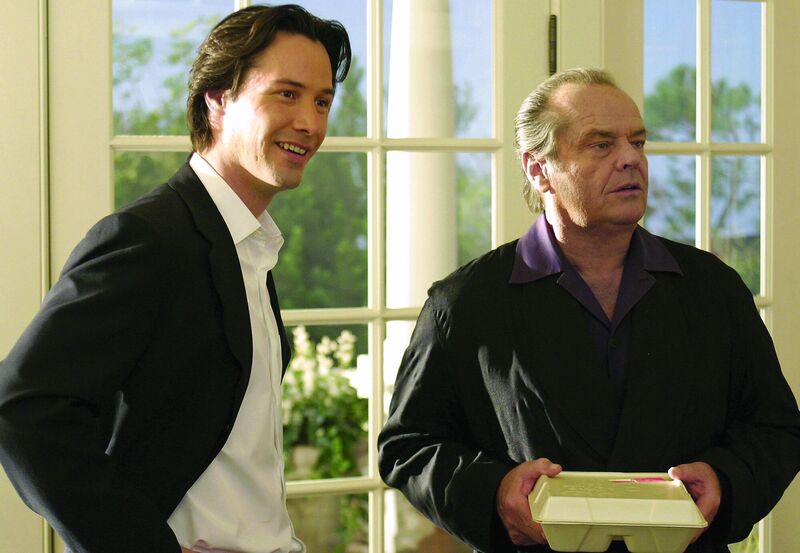Jennifer Horgan: Thank you, Diane Keaton, for teaching me one of life's important messages

Diane Keaton and Jack Nicholson in a scene from 'Something's Gotta Give'.
It interests me that Diane Keaton never married.
Her work has so much to say on the topic, and on human relationships in general.
She may even have ushered me down the aisle. I absolutely channelled in college, wearing oversized men’s suit trousers, shirts and even a tie on occasion. My husband noticed my low-slung rain-soaked trousers one day, and noticed me.
Thanks, Diane — you snagged me a good one.
I’ve spent hours revisiting her work this week, and it’s breathtaking. It’s as if she actively went about depicting the various ages of woman — from early romance in films like , to the later demands of marriage and motherhood in and . She shaded in the light and dark for us — from domestic violence in to finding redemption through friendship in .
She had it all — comic timing, a unique kind of beauty, endless energy, grace and charm. But as much as I love her work across films, and especially in , it’s that ranks as my all-time top Diane Keaton film. No, not just my favourite Diane Keaton film, it’s one of my all-time favourite films — full stop.
Keaton called her "favourite film" in her 2011 memoir, . Her love of it shows in her performance. God, she’s good in it. So good in fact that actor Jack Nicholoson had to pull director Nancy Meyers aside during filming to say he was a bit concerned as Diane had just told him she loved him.
It’s in the script, Jack — her bemused reply.
The 2003 film rightly earned her an Academy Award nomination for Best Actress. She lost out to Nicole Kidman for her performance in . It was a predictable win — rom-coms rarely receive top awards, but as directors like Nancy Meyers, Nora Ephron and Rob Reiner show us, we underestimate them. Horror is probably the most overlooked genre of all, certainly when it comes to awards, but rom-coms are similarly snubbed.
The Academy may not have taken the film seriously enough at the time but I want to talk about the film seriously now, following Keaton’s death, because I think it says far more than people realise.
is bursting with wisdom about everything and all of us. Yes, I know it’s about stupidly wealthy people who live in mansions in the Hamptons, and of course it’s not the most innovative or revolutionary of films, but that doesn’t mean it’s not brilliant.

On the surface, it’s all about love and the possibility of love at any age — a simple enough premise. Deeper down, it’s about what it takes to exist in the world with other people, different people, with different values, motivations and ideas. And what it takes is one thing above all other things — the belief that people can surprise you.
It's all there in the story — a blueprint on how to live in society.
Erica (Keaton) can’t stand Harry (Nicholson) when they meet. Who can blame her? He’s the sexagenarian standing behind her fridge door in his underpants, rummaging for snacks, gearing up to have sex with her young adult daughter.
Who wouldn’t see him as utterly irredeemable and gross? I know I would. I’m not a fan of the May-December relationship, certainly not when the woman is barely out of her teens.
Harry is a walking, talking cliché, bedding women young enough to be his grandchildren, sucking on expensive cigars and zooming around in his convertible like the road (and the world, particularly its young female contingent) exists only to please him.
Yuck.

But then, boom! Harry and Erica fall madly, deeply in love, so deeply in love that even a chisel-jawed Keanu Reeves must fade into a bit part. They connect on a beautiful, sun-bleached beach in the Hamptons. Magic happens.
Diane Keaton’s character is the protagonist, but the most interesting character development happens with Harry.
Before they find true and lasting love (spoiler alert) Jack struggles to escape the box he inhabits. Women have always looked at him as a player, a cad. He has always lived up to the role.
He says of Erica initially — “You are a woman to love.” Then he walks away. She, an acclaimed playwright who can somehow afford to live like a tech billionaire, turns it into the title of her play, delighting Broadway with a chorus line of “Henrys” dancing in open-backed hospital gowns, boasting prosthetic rear-ends. It’s all very silly.
But then there’s a turn. Jack takes time out and he changes, visiting all his previous partners to reflect on his bad behaviour. Erica’s belief in him changes everything — it makes everything, even true love, possible.
When somebody is looked at the same way for long enough, they freeze into the role. They back up into certain behaviours or attitudes, hunker down in them, seeing them as an integral part of their identity. The bold boy, labelled a bold boy, only gets bolder.
When somebody is offered an escape, by being looked at, potentially seen for the first time, anything can happen, even magic. All bets are off.
This is what I mean by the film being a blueprint, a guide.
Imagine if we extended this idea to the most loathed people in society?
What if we looked at people beyond stereotypes, beyond how even they present themselves?
Our response is so often to assume the inherent worthlessness of people who seem to have different values than us. Clinton did this in the 2016 election, calling half of Trump’s supporters a “basket of deplorables” for being racist and bigoted.
This is often what community building looks like. We spend our time raising awareness and defining ourselves against the bad element. Far less time is spent looking people in the eye with the hope, however tiny, that they may be less awful than we think. Even less time is given to wondering at their motivations, their fears, their insecurities and battles, their possibly understandable concerns.
For me, the message of goes well beyond romantic love.
Erica reminds us that if we don’t write people off straight away, we might be surprised by them, even when they seem to fit the bill of a complete lothario, or anything else - a bigot, an ignoramus, a thug.
It is a film that is joyously, unapologetically hopeful.
If all this sounds like pure rubbish, the good news is that you can also enjoy this film as a light little rom-com. Like Diane Keaton, who Meryl Streep lovingly described as “arguably the most covered up person in the history of clothes,” it has layers.






